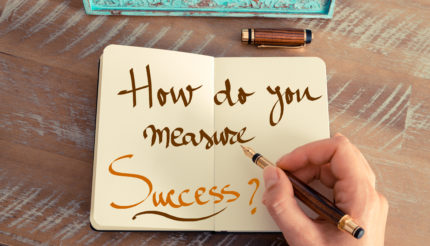Do you know who your ideal client is and where to find them?
Without a client profile, trying to market your services and win genuine leads can be a serious waste of time. Just firing adverts, emails, social media posts and phone calls out into the world without any particular strategy can also be a significant waste of money.
Creating a client profile and targeting your sales and marketing accordingly can result in some easy quick wins when it comes to generating real leads for your business.
What is a client profile?
Also referred to as a customer persona, or buyer persona, a client profile is a generalisation about the person or company which is most likely to acquire your services.
The service you provide will meet a real need for them and create measurable value for their company. They are the ones who will buy from you regularly, or in the largest quantities, and therefore be of greatest value to your business.
You want to end up with a generic business or individual profile. For example, your ideal client might be B2B IT businesses, with fewer than 50 employees, which uses a particular software system, based in the Midlands, with an annual turnover up to £2million. Or it could be women, aged 35 to 55, who live within a 20-mile radius of Birmingham, are educated to degree level, have two or more children and like visits to the theatre.
How to identify your dream client
You do have to put a bit of effort into pinpointing your ideal customer persona, but if you invest the time in fleshing out the detail, you should reap the rewards later.
Research: A good place to start is among your own customer base. Depending on what CRM systems you use, you may already have valuable customer data that you can further analyse.
Create a list of your best customers. You can group customers into revenue streams – does the biggest revenue come from individuals, B2B companies, B2C companies? Are they large, medium or small enterprises?
Interviews: Once you have started to identify those personas who are most likely to buy from you, it’s time to go even further with some client interviews. This could be individual consumers, or the employees with responsibility for purchasing from you.
Ask what their role is, what skills are needed to their job and what a typical day looks like, their business challenges, how they found out about your business and why they use your service above others.
You also need to know how they access information. So what publications and websites do they visit (in relation to your services), what groups or associations are they a member of, what conferences/expos do they attend, what style of communication do they prefer, what social networks do they use and so on.
For individual consumers, you might want to ask about where they live, age, their marital status, whether they have children and how old they are, their educational background and career.
How to use your client profile
Once equipped with this information, you should be able to start creating a client profile. The more detail you can add to it the better.
You can use the profile to create the best possible content for your marketing campaigns and to target your marketing appropriately. For example, if you’ve identified that your ideal customer is most likely to use LinkedIn, think about using LinkedIn. Or perhaps they are likely to read a certain industry magazine which is therefore worth advertising in. If you know they are more likely to attend a particular conference, you can make more of an informed decision about whether it’s worth investing in a presence there.
With individuals, you can also look at targeted advertising on social media sites such as Facebook, which enables you to reach very specific groups of people.
Hopefully creating your customer profile and using some of these tactics will give you a more strategic approach in your sales and marketing techniques.
For more helpful advice on business planning and growth, contact Gary Wagstaff ActionCOACH today.






